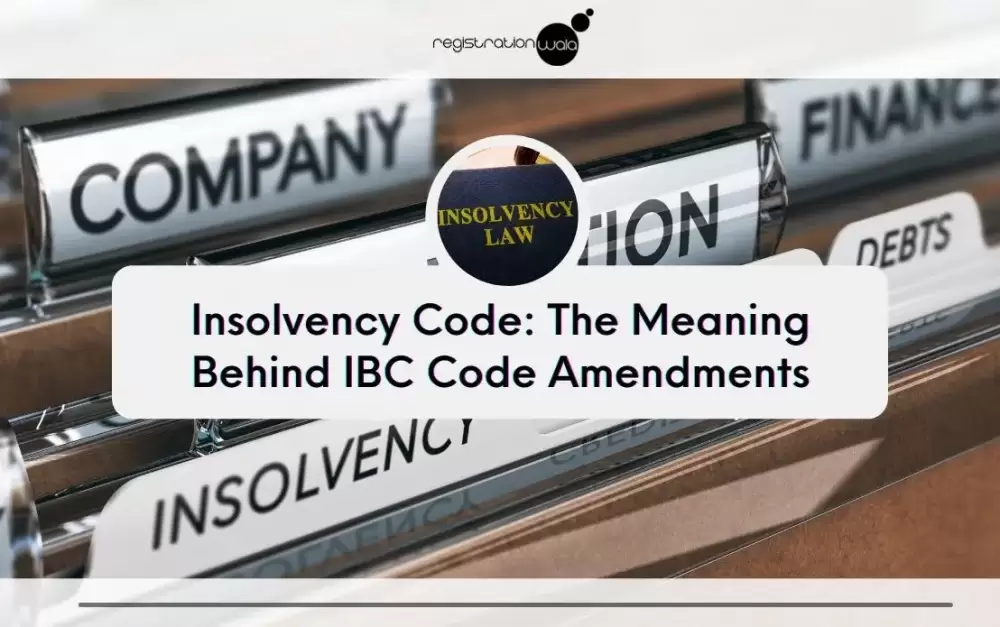Insolvency Code: The Meaning Behind IBC Code Amendments
- March 04, 2022
- Registrationwala

- Home
- /
- Knowledge Base
- /
- Insolvency
- /
- Bankruptcy
- /
- Insolvency Code: The Meaning Behind IBC Code Amendments
Insolvency Code: The Meaning Behind IBC Code Amendments
Insolvency and bankruptcy code is one of the most controversial collections of laws in India as of this moment. The code is in no way perfect and with each year, more amendments are coming to make it a bit more accessible. However, understanding them is still confusing. Thankfully, courtesy of Economic times, we now have a more understandable explanation of the changes that are made in an already confusing code.
The First IBC Amendment
The first amendment of IBC happened in 2017, and following is the introduction of these changes and its brief explanation:
- Introduction of section 29A: This provision was introduced from stopping the defaulters on bidding on their own companies:
- Meaning: Defaulter cannot try to by the control of their own company through cheap measures
- People that control NPA for more than 12 months cannot bid:
- Meaning: Persons who have control over an account that has been a Non-performing asset are now barred from bidding on company assets.
- Resolution plan needs the approval of 75% of COC:
- Meaning: Small creditors can now contribute to the insolvency resolution process result.
The Second IBC Amendment
The second amendment of IBC happened in June 2018 and the following changes were made back then:
- Introduction of Section 12 A: option to creditors to withdraw insolvency application within 30 days:
- Meaning: Defaulters can now get into an out of court settlement if 90% of creditors agree to it.
- Promoters of MSMEs allowed to bid on their companies: It was difficult to find buyers for Small industries:
- Meaning: MSME owners can regain control over their companies after they reach a proper agreement with the banks.
- Homebuyers are financial creditors now: Homeowners who provide funding for residential projects needed a voice:
- Meaning: Real estate developers now are going to think twice before defaulting on their commitments to their customers.
- Resolution plans now need approval from 66% of the creditors: To provide an increased chance of reaching a resolution.
- Meaning: More insolvency resolution processes can reach a conclusion.
- Bidding allowed for financial entities who are unrelated to but have equity in defaulter: More bidders leads to faster resolution:
- Meaning: Removal of unnecessary criteria for disqualification.
Special judgments
Supreme Court made two special judgments:
- Supreme Court allowed the withdrawal of insolvency proceedings after initiation of the process.
- Meaning: Out of Court settlement was made possible even if the insolvency resolution process is about to end.
- Supreme Court allowed family members of the defaulters who were never in business with them.
- Meaning: Access to more bidders for resolving large assets.
Conclusion
Insolvency and Bankruptcy Code is quite confusing to understand and quite difficult to accept. While we hope that this blog has made you understand the code a bit better, we have to hope that the future changes in the code make more businessmen accept it. Whatever happens, time will tell. Till then, it is necessary that we do our best not to become insolvent.
- 3719 views
